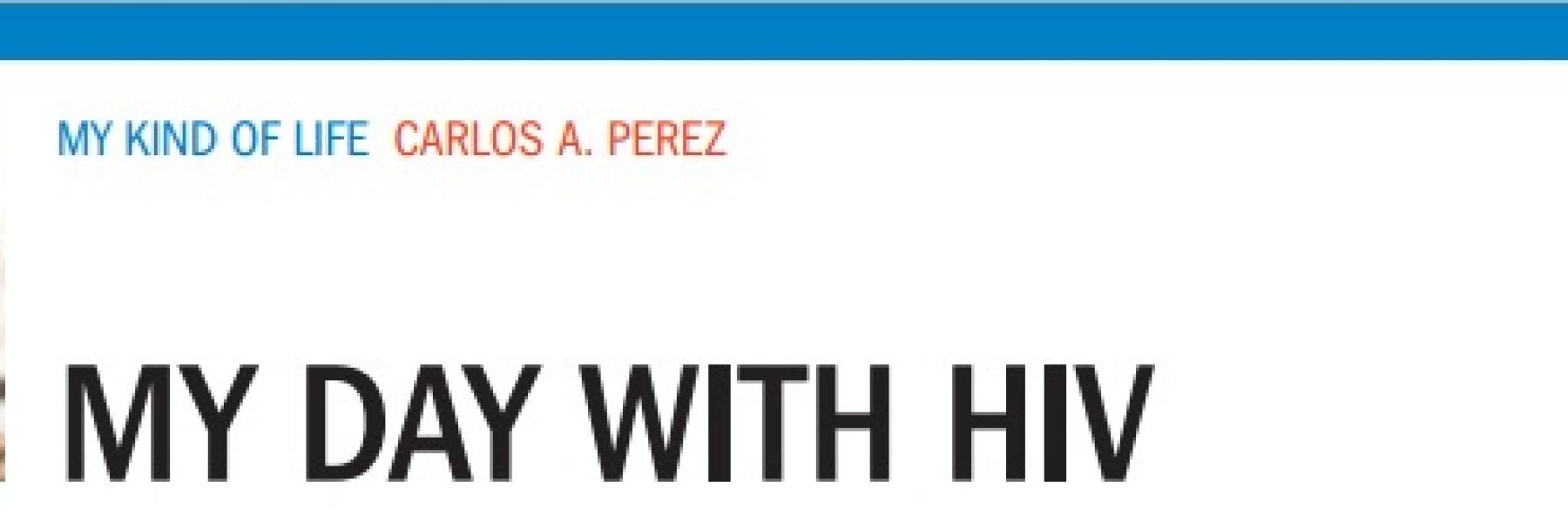
We’ve come a long way, baby. We have over 35 HIV medications. We’ve learned more about the immune system, thanks to HIV and AIDS, than we may have ever known had it not come along. We’ve created or found medications that treat opportunistic infections and we have implemented a plethora of prevention and treatment programs from harm reduction and needle exchanges to myriad styles, colors, and tastes of condoms and other barriers for safer sexual practices.
The huge purple gorilla in the room that no one can yet deal with is the fear and stigma associated with HIV and AIDS. This is why A Day with HIV is so important. Ghirardelli was the original manufacturer of chocolate in America but Hershey’s was the first to mass produce it, and their name is and always will be the most commonly associated with chocolate. In this same manner, once HIV (or GRID back then) arrived in this country cloaked in fear, stigma, and shame, associated with “those people” who were “carriers,” the wheels of unscientific ideas about HIV and people living with it were set in motion and destined for a collision course with everything science tried to explain. As human beings we learn things best through trauma and fear, and once ideas are set in place, our entire society needs to be re-educated.
The more we show people how normal it is today to live with HIV and even AIDS, the more we help tear down the fear and stigma machine. Even the CDC has tried to undo the sense of fear and panic fueled by our own government via the Reagan administration’s reluctance to even mention “GRID” or “HIV” during the epidemic’s first five or six years, and therefore today they still struggle to quash the early fears that touching and kissing or sharing eating utensils might cause HIV to spread.
I speak with people every day in my work as an HIV medical case manager to retrain them on what transmits the virus and what doesn’t. To assure people that they can have sex with other people regardless of HIV status by reducing their viral load to undetectable, by taking either PEP or PREP and by using safer sex techniques. And at least once a week I hear things like “but I can go to jail if…” And at the end of the day all this fear and anxiety keeps people from getting tested. Until we’re able to convince people that if you get tested for HIV you will not go to jail or wind up in any legal trouble, we will have to continue mass educational efforts. A Day with HIV puts everyday people in every shape, color, gender, and age range in your face telling you how normalized and perhaps wonderful their lives are today living with HIV and AIDS.
When I received my diagnosis I was also in so much fear and felt the societal stigma so fiercely that I, along with many friends, went underground and had sex in clandestine places in the dark and under the roofs of bathhouses, bookstores, and sex shops where we could go and not even have to share names or phone numbers with anyone. A few years later the Internet made this even easier by creating an entire specialized virtual space where we could meet with each other one-on-one or in groups and with every type of fetish under the sun. This only created mini-communities where syphilis, gonorrhea, chlamydia, HIV, hepatitis and now, more recently, meningitis can flourish. If we could have been more comfortable with ourselves and with being HIV-positive, we may have been able to keep our health in a better place and space, but we have needs like anyone else and we had to do what we had to do to feel the touch of another person close to us.
A Day with HIV shows the world that we are carpenters and teachers; case managers, doctors, and nurses. We are firemen, athletes, and policemen and we are everyday people. And we don’t care what opponents care about HIV, AIDS, or anything else that’s linked to sexual activity because life happens and sex is part of life. If diabetes or Alzheimer’s was spread through sexual activity or needle sharing, we would be scared of diabetics and people experiencing Alzheimer’s. It’s all about how the virus is spread and, as a country, we still have issues.
This is my example of what fear and stigma can do. It can create a barrier higher and stronger than the wall of China, and only as a community can we raze this wall down to the ground and not care how we got HIV. We only need to show our smiling faces today and let the world know we have other fish to fry.


